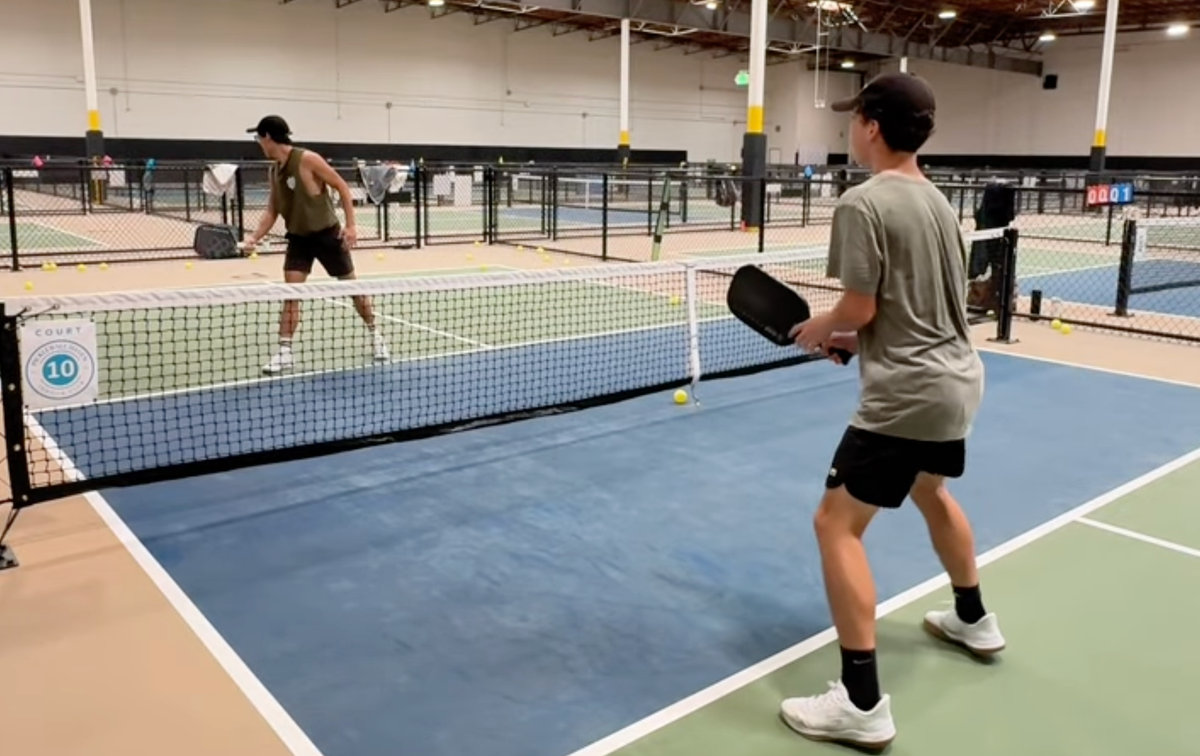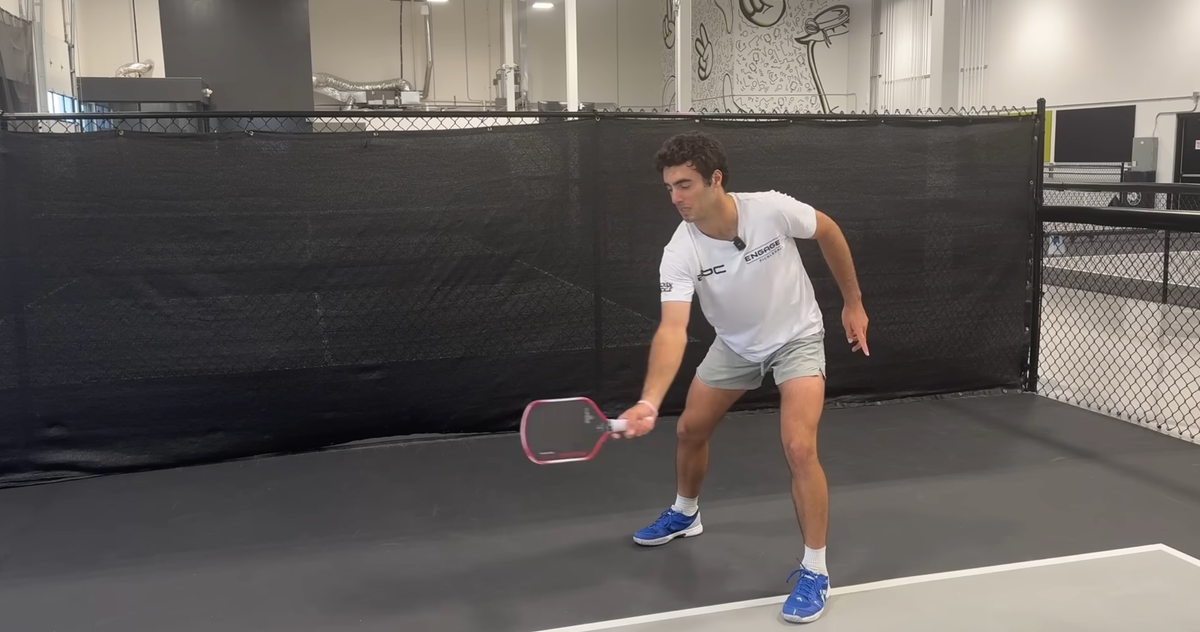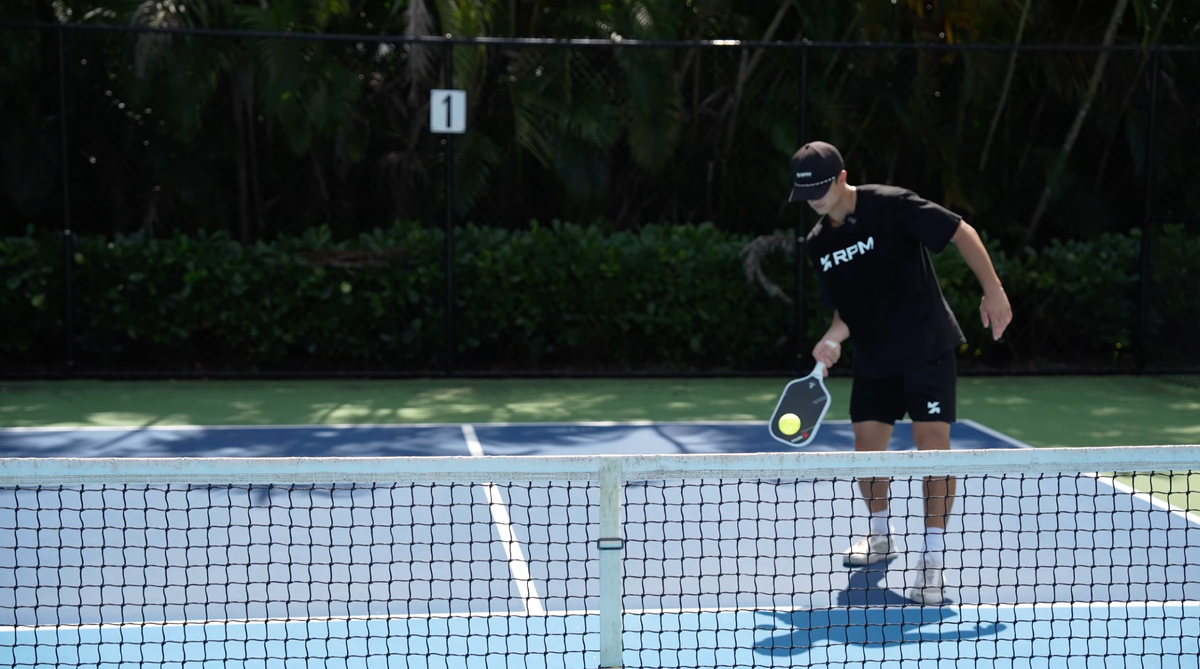
Confused about pickleball, or are you about to play it for the first time? You’re about to dive into a sport that’s a fun mix of tennis and ping-pong.
Played using a unique paddle and a perforated ball, you volley the ball over a net 34 inches high in the center, aiming for the opposite side of the court. Here, you’ll learn how to play pickleball and excel at it.
How Pickleball Beginners Should Prepare
If you are new to pickleball, you may be unsure what to prepare. Here are a few to help you get started:
Pickleball Paddle
Your most essential tool. Unlike tennis rackets, pickleball paddles are smaller and solid, without strings. They come in various materials like wood or composite. A lighter paddle helps in quick volleys and better control.
Check out our list of the best paddles for beginners.
Pickleball Balls
Specific to the sport, these are similar to wiffle balls but tougher. They have holes designed to fly straight and bounce correctly on the pickleball courts. Whether indoors or outdoors, ensure you get the right ball type for your court.
Comfortable Shoes
Good court shoes are key since pickleball involves quick movements and bounces. They provide the necessary grip and support. You don’t want to slip when reaching for that crucial volley or serving diagonally across the court.
Looking for a pair? Check out our recommendations of the best pickleball shoes.
Portable Net System
If you don’t have access to dedicated pickleball courts, a portable net system is handy. The official pickleball net is 34 inches high in the center. With a portable net, you can set up a game anywhere, even in your driveway. We have some recommendations here.
What Do Pickleball Courts Look Like?
When you step onto a pickleball court, you’re entering a uniquely designed play area. It’s smaller than a tennis court, making it perfect for fast-paced, exciting gameplay.
You play pickleball on a court measuring 44 feet in length and 20 feet in width. This size is consistent whether you play singles or pairs.
The net divides the court in half and is 34 inches high at the center, rising to 36 inches at the sides. This lower height compared to tennis nets influences the game’s strategy, especially for volleys and serves.
The surface of a pickleball court is similar to tennis courts – usually made of concrete or a similar hard material. It’s smooth, allowing for predictable bounces and swift movements. The court is marked with lines that define the service areas, the kitchen, and the baselines.
The kitchen is a key area in pickleball. It’s a seven-foot space on each side of the net where you cannot volley the ball. This rule prevents overly aggressive players from dominating the game at the net.
Each side of the court is divided into a right and a left service area. Serving must be done diagonally, from one service zone to the opposite. These dimensions and markings are important for both gameplay and strategy in pickleball.
They guide where you serve, how you position yourself, and how you plan your shots. Understanding the court layout is a big step towards mastering pickleball.
Pickleball Scoring
Pickleball scoring might seem complex at first, but once you understand it, it’s quite straightforward. It’s unique, especially if you’re used to tennis or badminton.
Only the serving team can score and add points. The game begins with a serve from the right side of the court. Server serves underhand, and the ball must travel diagonally, to the opposite service zone.
If the serving team wins the exchange, they get a point. The server then switches to the left side of the court to serve again. This switching continues each time the serving team scores a point.
A standard pickleball game is played for 11 points, and the winner must lead by at least 2 points. In tournament play, games may go to 15 or 21 points, with the same 2-point winning margin.
Scoring in paired play has an added twist. Both players on the serving team get the opportunity to serve and score points, except at the start of each new game, where the first team to serve has only one serve.
The score is called out in a series of three individual digits:
- score of the serving team,
- score of the receiving team, and
- a number indicating the server.
For instance, “1-0-2” means the serving team has 1 point, the receiving team has 0, and it’s the second server’s turn.
In singles, the server serves from the right side if their score is even and from the left if it’s odd. The rule helps players keep track of the serve.
Rules of Pickleball Game
Pickleball mixes tennis, badminton, and more, which means the rules can be confusing.
However, to survive your first game, here are five basic rules you should know. Knowing these rules, you should be a useful player on the court:
Starting The Game
A pickleball game typically starts with a coin toss. It is used to determine which player or team gets the initial choice. The winner can choose either to serve first or to choose the side of the court they wish to start on.
The Serve
Serving in pickleball is quite specific. You must serve underhand and diagonally across the court. The serve starts from the right service area, and alternates side each time a point is scored. The ball must clear the kitchen and land in the diagonal service area.
Two-Bounce Rule
After the serve, both sides must allow the ball to bounce one time before they can volley. The team that serves must let the ball bounce in their court before hitting it, and the receiving team must also let it bounce before their volley.
The Kitchen
The non-volley zone, or the kitchen, is a seven-foot area on either side of the net. Players cannot volley the ball – hitting it before it bounces – while standing in this zone. This rule prevents players from dominating the play too close to the net.
Scoring
In pickleball, points can only be scored by the serving team. Games usually are played to 11, and the winning margin must be by at least 2 points. When playing in pairs, the scoring system uses a sequence of three numbers. In paired games, the scoring system includes a sequence of three numbers representing.
Faults
A fault in pickleball occurs in several situations, like when the ball is hit out of bounds, doesn’t clear the net, or is volleyed from the non-volley zone. If the serving team commits a fault, it results in a loss of serve or a point for the opposing team.
How To Serve In Pickleball
Serving in pickleball sets the tone for each point. As you stand behind the baseline, remember your serve is underhand. The paddle must pass below your waist level.
Your serve must go diagonally across the court and land in the opposite service area. For example, if you’re on the right side of the court, aim for the left service area of your opponent. The ball must clear the non-volley zone, known as the kitchen, without bouncing.
In pickleball, only one serve attempt is allowed. If your serve touches the net or lands out of bounds, it’s a fault, and the serve goes to the opposing team. In singles and doubles, serve sequences differ slightly, but the basic serving technique remains the same.
Pickleball Singles or Doubles – Which Is Better For New Players?
As a new player, you might wonder if singles or doubles pickleball is easier to start with. Both formats have their unique challenges and benefits.
In singles pickleball, you have the entire court to cover by yourself. This means you need to be quick on your feet, ready to run and reach for every ball. Your endurance and agility are tested more in singles.
You also get more opportunities to hit the ball, helping you improve your skills faster. However, it can be more physically demanding.
Doubles pickleball, on the other hand, requires less physical movement. You have a partner to cover half of the court. This can be less intimidating for beginners who are still learning to position themselves correctly and react to the ball.
You also need to coordinate with your partner, understand their play style, and develop strategies together.
For beginners, team play might seem easier because of the reduced physical demand and shared responsibility. However, singles pickleball offers a faster pace for improving personal skills like accuracy and ball control.
What Is The Two-Bounce Rule?
In pickleball, once you serve, the two bounce rule comes into play. The serving team must allow the ball to bounce once before hitting it, and similarly, the receiving team must also let it bounce once on their side before returning.
This means there are two bounces in total – one on each side – before players can start volleying the ball.
This rule adds a strategic layer to pickleball. It prevents the serving team from gaining an immediate advantage by volleying the ball right after the serve. It also gives the receiving team a fair chance to set up their return.
The two bounce rule keeps the game balanced and encourages longer rallies, making the game more enjoyable and competitive.
How to Play Pickleball
Mastering pickleball requires understanding its unique blend of rules. The key is to skillfully maneuver the paddle, volley the ball, and strategically navigate the court.
Remember, the serving team has opportunities to score but must adhere to rules like the two-bounce requirement and avoid faults in the non-volley zone.
As you continue playing, you’ll develop better pickleball strategies and enjoy the dynamic, fast-paced gameplay this sport offers.
Mike Branon is the bestselling author of Pickleball & The Art of Living. His latest book, The Joy of Pickleball, seeks to help older athletes play their best and experience the physical and emotional benefits that pickleball offers. He has appeared on numerous podcasts, TV and radio shows around the country, sharing his knowledge and passion for the game. Mike has coached hundreds of novice and experienced players from age 8-80 -something. His books and instruction are dedicated to helping others live their best lives and to play better, healthier, and happier. Mike lives in Carlsbad, California with his wife, Diane, and designer mutt, Cabo. As a well traveled pickleball connoisseur, Mike will be writing about tips and strategy for those who are looking to improve their game. | Instagram | Twitter | [email protected] |
Anuncie Aqui / Advertise Here
Sua marca para o mundo Pickleball! / Your brand for the Pickleball world!

 English
English  Spanish
Spanish  Portuguese
Portuguese  German
German  Italian
Italian  Japanese
Japanese  French
French  Polish
Polish  Russian
Russian  Netherlands
Netherlands  Hungarian
Hungarian  Turkish
Turkish  Videos
Videos  Pickleball Portal
Pickleball Portal








 English (US) ·
English (US) ·  Portuguese (BR) ·
Portuguese (BR) ·